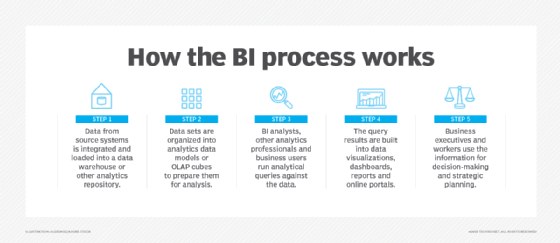

To get the most out of your data, you need to ensure its accuracy, validity, and completeness before you move onto choosing the right BI tool for your company. If data retrieval is erroneous or slow, then even the best business intelligence tool wouldn’t help. While a BI tool can help a company create a competitive advantage, it’s imperative to remember that a BI tool is only as good as the data it accesses. Evaluate your own processes first and then do your due diligence
Bi tools evaluation software#
Cloud-based software offer the best experience for businesses who want to be able to work on the go. Easy accessĪ BI solution that supports different platforms will benefit businesses whose key decision-makers are constantly on the go and who want the ability to access graphs, charts and patterns anytime, anywhere for convenience. Better BI tools will cater to this capability. Ranking reports help your business gauge areas where it’s doing well and identifying areas for improvement, so you can gain more insight into the inner workings of your company. To further strengthen control of data protection, it is vital to have mechanisms for managing the internal security by assigning access controls and user permissions. Better BI tools will ensure strong encryption and protection – especially if cloud-based. Securityīusinesses need to protect their most critical data that is often confidential. The system should also cater for users who want to view the highest-level overview regarding performance for example, right down to the most comprehensive and detailed granular view, or raw data.

The BI tool that you select for your business should have capabilities such as an easy way to navigate around the system, including but not limited to search functions and filters so that users can easily look up the information they’re trying to find. So, the features they value above all else may include for example, model creation, user interfaces, and defining workflows. The other side of the same coin is catering for your more proficient users like business analysts who pay attention to certain features, such as flexibility, in the software. At the same time, they should offer up a rich, rewarding contextual experience. Selecting a BI tool should be capable of guiding users who may not be the most technologically savvy through the whole model creation process. Ensure the BI tool is easy to use and intuitive For example, if your team wishes to track history, they require a BI tool that offers standard support for growing dimensions that may need to be customisable. Once that is sorted, it’s time to hone in on the business-critical selection criteria. You should have a clearly defined strategy. This includes the BI tool supporting different data sources such as spreadsheets, ERP, CRM for example. This allows businesses to retrieve and sort data that may be in multiple locations and sources, as well as letting business users to explore the data. Integration with current systemsĬhoosing a BI tool that supports seamless integration with existing reporting processes will be extremely beneficial. With this in mind, we’ve done the hard work for you and collated a useful checklist to help you choose a data analytics or BI tool as well as a few features to look for when deciding to invest in a Business Intelligence tool. To enhance your prospects of extracting useful information from large chunks of data it is imperative to select a Business Intelligence solution that fits the existing and emerging needs of your business. However, with the sheer amount of data flowing in, how do companies make better sense of this information? Without the correct Business Intelligence tool, businesses will have a difficult time finding a usable piece of data. Many businesses understand the importance of data. UK Manufacturing Report Sector Performance 2020-2021.Manufacturing Productivity Guide Learn About Productivity in Manufacturing and How Gains Are Unlocked.Supply Chain Management Guide Learn about supply chain management for modern SMEs.The Modern Manufacturing Guide NEW Practical advice for small & medium enterprises.
Bi tools evaluation series#


 0 kommentar(er)
0 kommentar(er)
